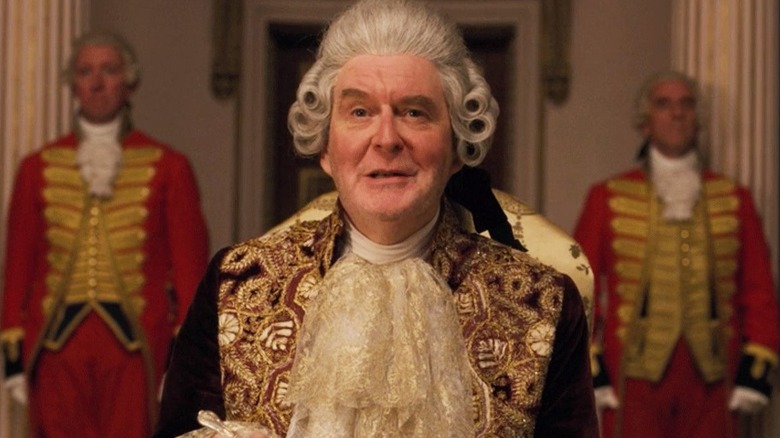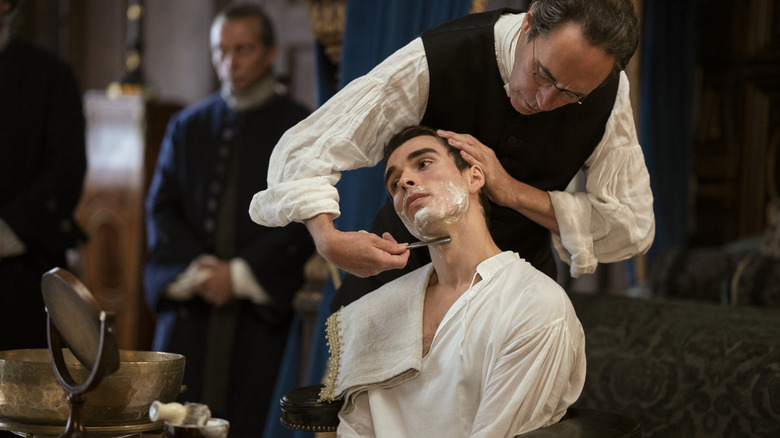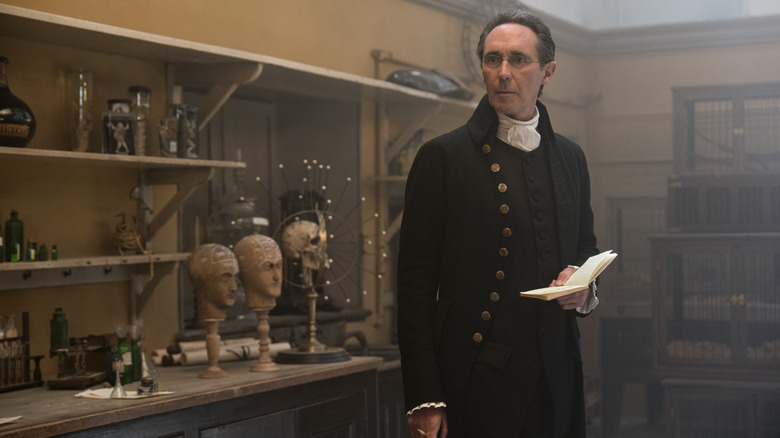Liam Daniel/Netflix
From the start of its first season, “Bridgerton” has been loosely basing its narrative on historical events. The series creatively mixes aspects of the actual Regency era with its own unique alternate history. This approach complements the show’s rich fashion and romantic genre, creating a balanced narrative. One character that draws heavily from real English history is King George III.
In the original “Bridgerton” series, George (James Fleet) is largely a peripheral figure, his screen time reduced due to a mysterious ailment. Queen Charlotte (Golda Rosheuvel), a secondary character, provides brief glimpses into their poignant love story. It’s evident that George’s health is poor, leaving his wife to govern mostly on her own.
The spin-off “Queen Charlotte: A Bridgerton Story” offers more insight into Charlotte (played by India Amarteifio) and George (Corey Mylchreest), including their relationship and George’s mental health issues. George is portrayed as battling one or more mental health disorders, possibly a form of bipolar disorder. His condition worsens in “Queen Charlotte,” due to the primitive medical treatments inflicted upon him. In his later years in “Bridgerton,” his symptoms lean towards dementia. But how close are these characterizations to the real-life King George?
The Real-Life Treatment of King George III

Netflix
In “Bridgerton,” King George is largely confined to his private quarters, hidden from public view, occasionally dining with Queen Charlotte when his health permits. The “Queen Charlotte” series depicts a younger George grappling with early manifestations of similar problems. However, historical records do not diagnose the king with such conditions until later in his life. During the early 1800s, around the time “Bridgerton” is set, consistent health problems forced George to retire from his monarchial duties. In 1811, he was declared unfit to rule and was formally succeeded by his son.
“Queen Charlotte” portrays George as a young man fascinated by science and astronomy but tormented by psychological issues. In contrast, the historical King George III was probably more preoccupied with political matters like the American Revolution. His image as a “mad king” is exaggerated, considering our current understanding of his probable mental conditions. Nevertheless, his reputation as a tyrant domestically and internationally is not entirely baseless.
Comparing the Real and Fictional King George’s Conditions

Nick Wall/Netflix
Due to the limitations of medical technology during his time and the secrecy surrounding the royal family, it’s challenging to definitively identify the potential medical conditions that the real King George III might have had. Nonetheless, current theories align well with his portrayal in “Bridgerton.” A 2015 study by the University of Birmingham’s Timothy Peters, using “cognitive archeology” techniques, confirmed the two conditions previously mentioned. According to the study, “The results of this analysis confirm that the king suffered from bipolar disorder type I, with a final decade of dementia, due, in part, to the neurotoxicity of his recurrent episodes of acute mania.”
In essence, George’s dramatized depiction in the “Bridgerton” series closely aligns with what experts currently believe to be the actual situation. Both in the series and his real-life, George was dismissed as suffering from a form of “madness.” This reflects the significant strides we’ve made in our understanding and discourse around mental illness today.
Were Queen Charlotte’s Harsh Medical Treatments on King George Accurate?

Nick Wall/Netflix
As noted earlier, the historical King George III didn’t experience significant mental health crises (as far as we know) until much later in his life compared to his portrayal in the “Bridgerton” universe. However, his retreats to Kew Palace, as shown in “Queen Charlotte,” did happen in real life during his bouts of illness, albeit later in his actual life.
The harsh and brutal medical treatments inflicted upon George in “Queen Charlotte” are not far from what the real king endured once his “madness” took hold. When the King started having episodes, he was subjected to a series of procedures now recognized as absurd and even harmful. Sky History reports, “These included applying arsenic-laden powders to the king’s skin to make it burn and blister, starving him and plunging him into freezing cold water. The king was also given emetics to make him vomit and purgatives to give him diarrhoea [sic].” Doctor John Monro, portrayed by Guy Henry in “Queen Charlotte” as a “mad doctor” as they were known back then, was a real person. However, he did not work directly with King George and had passed away years before the king’s “madness” manifested.
Straitjackets and gags were also used at times to “restrain” the king. While the precise nature of his condition will never be known, it’s safe to say that George would have benefited from a less violent regimen and a better understanding of mental health. Nevertheless, as the King of England, it’s plausible that some of his more aggressive episodes were more related to his relationship with power than his underlying medical conditions.
Both “Bridgerton” and “Queen Charlotte: A Bridgerton Story” are available for streaming on Netflix.
FAQs
Is “Bridgerton” based on real history?
While “Bridgerton” draws inspiration from the real Regency era, it also creates its own alternate history, offering a unique take on the time period.
Who was King George III?
King George III was the King of England during the late 18th and early 19th centuries. He is often remembered for his bouts of “madness,” now believed to have been symptoms of bipolar disorder and dementia.
Are the medical treatments shown in “Queen Charlotte” accurate?
Yes, the brutal medical treatments inflicted upon George in ”
Credit: www.slashfilm.com


